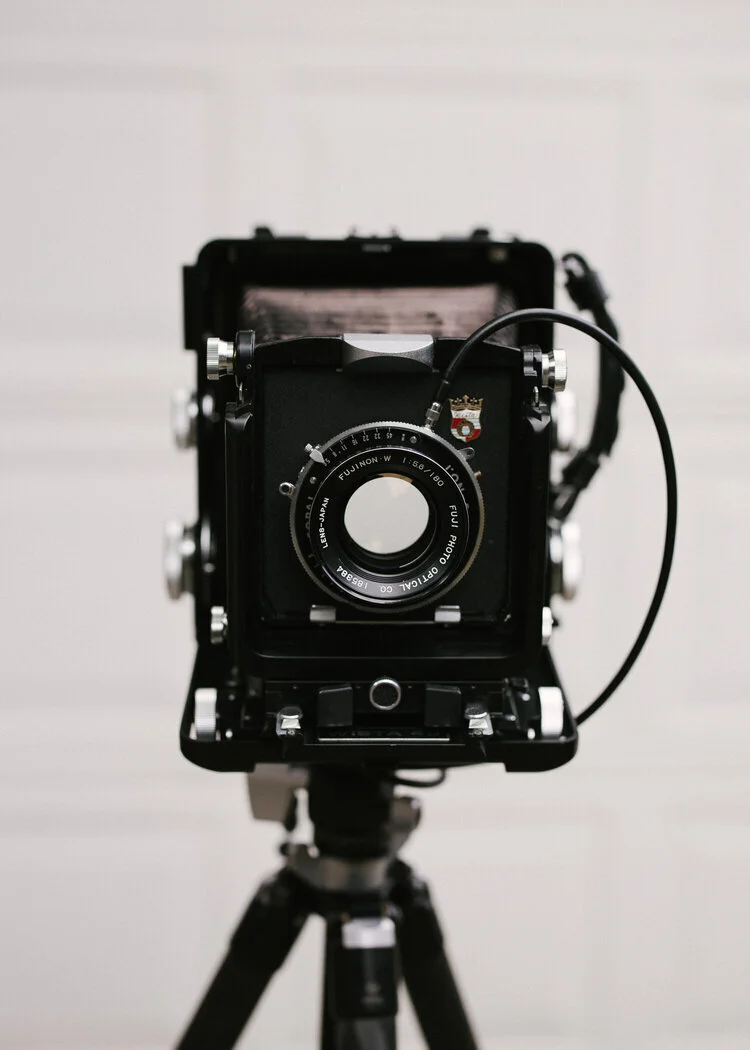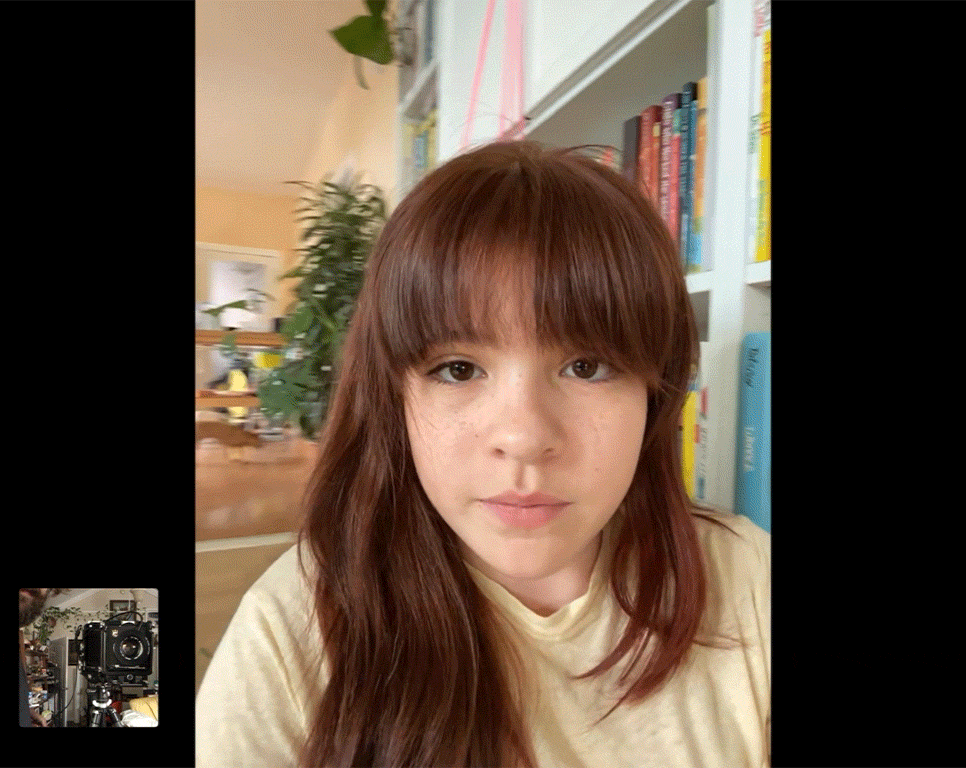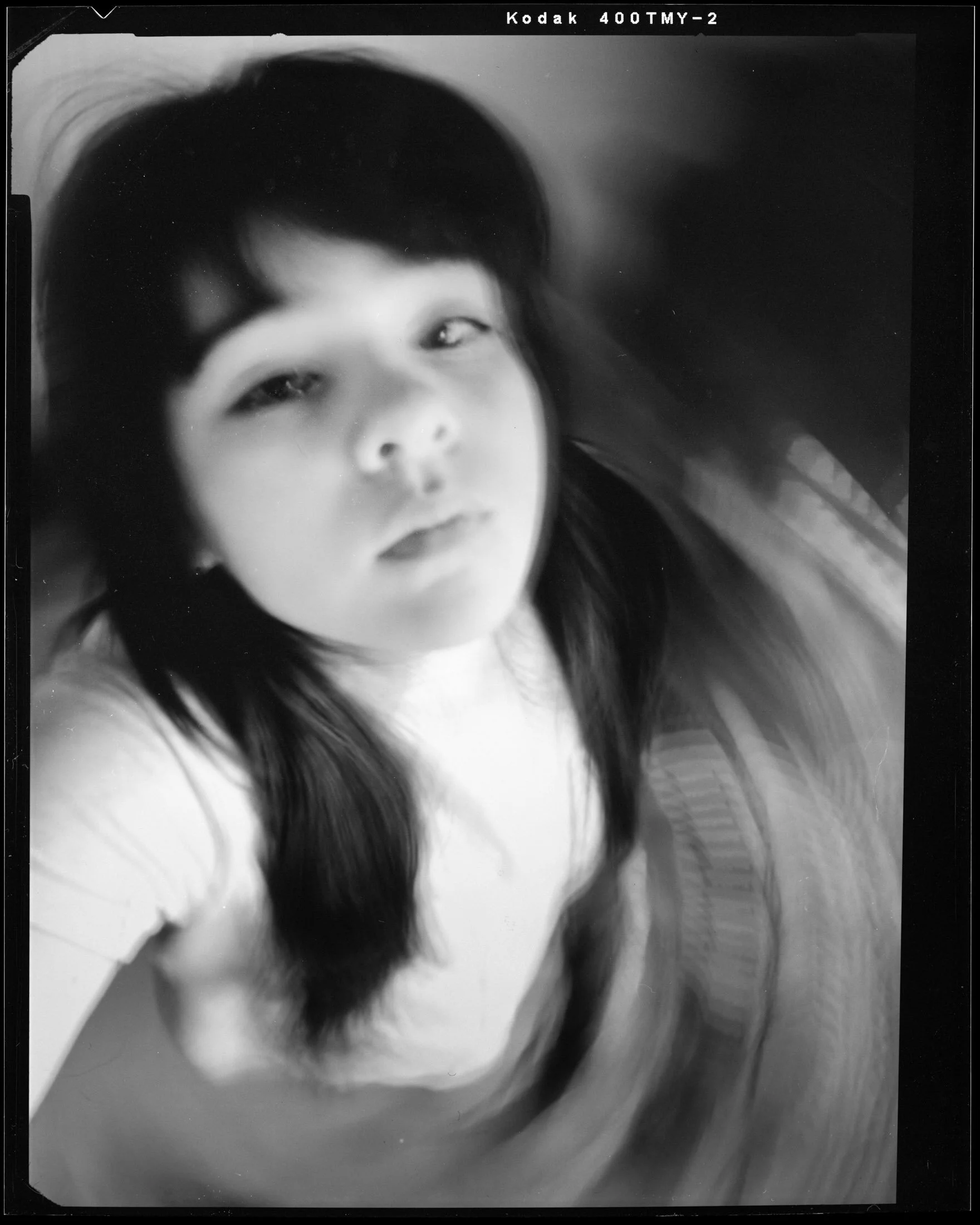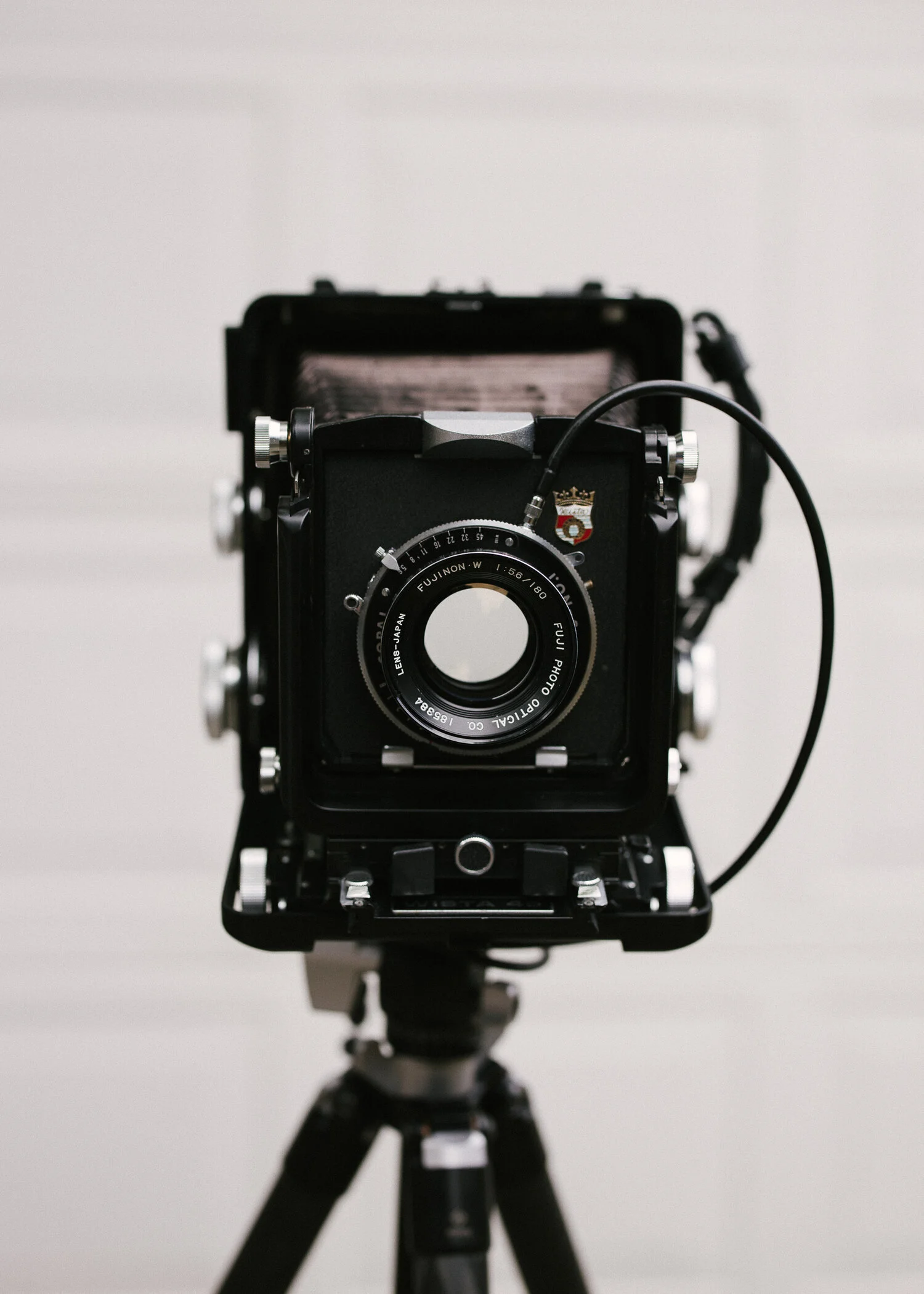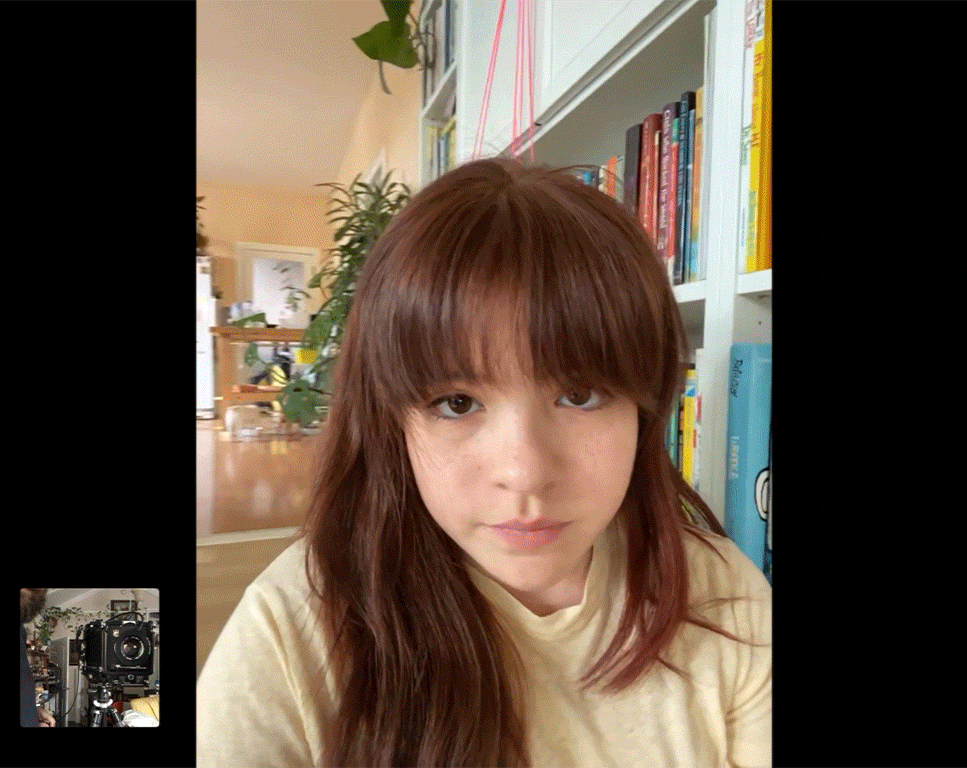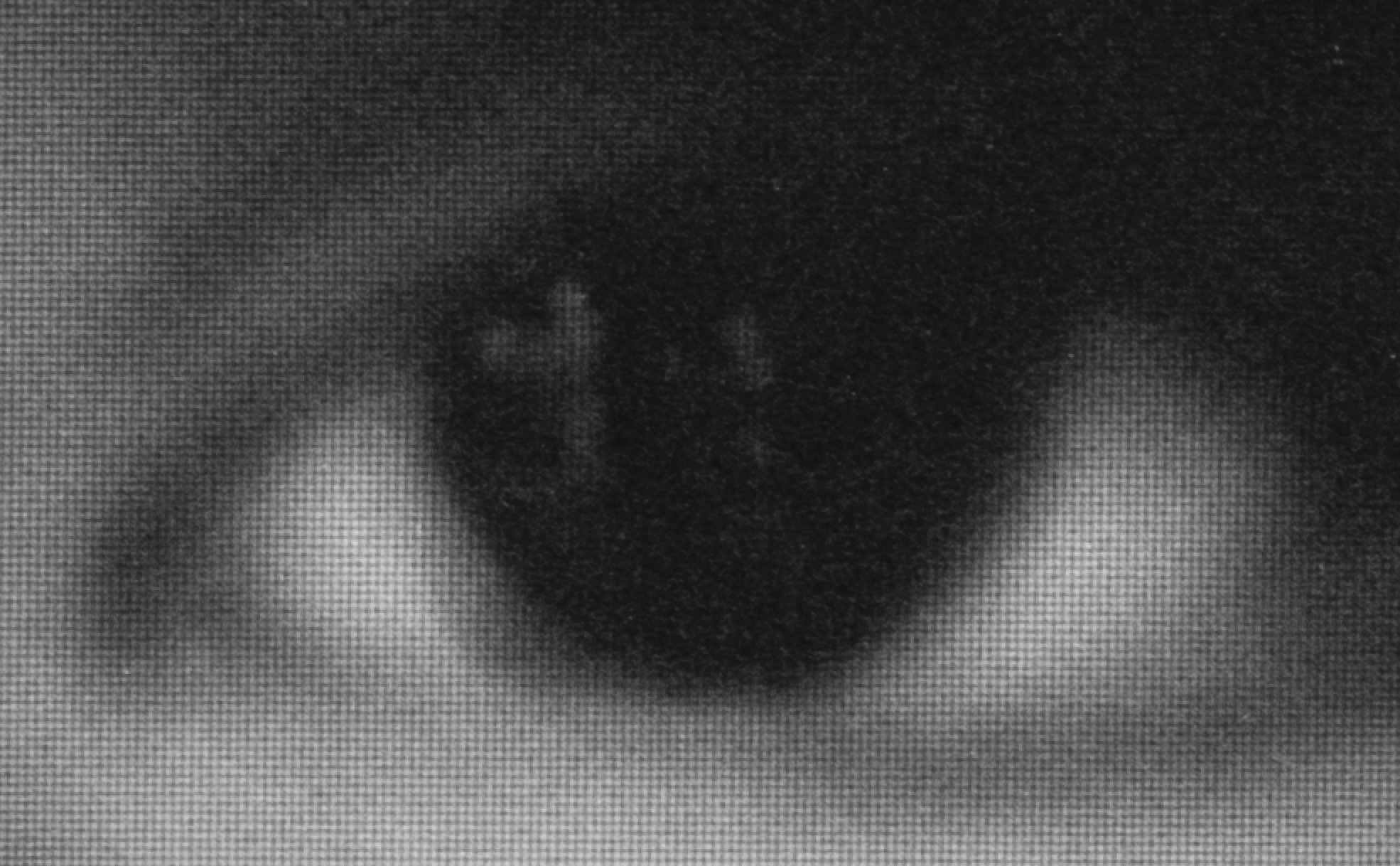Movement example
Resulting photograph
Full description further down - here is the tl;dr key information only:
I will take a photo of you remotely, through a video call, using a large format film camera
The most convenient way to do the video call is through FaceTime, but Google Hangouts/Meet, Zoom, Skype, etc. are fine
The film will be exposed for a duration of 1 second, and you will physically move but keep your head still within the frame - the long exposure makes the background blur away
Tips:
I can provide guidance, but it’s your choice how to present yourself and how to move - in a very real sense it’s both a portrait and a self-portrait
To get an interesting blur, having detail and contrast (both light and dark areas) behind you are key, but there are many creative possibilities
I’ve found that though it’s not quite as important as with a regular photograph, lighting does matter a lot - I will help you find good light if needed
Try to look into your phone or other device’s camera (I may forget to mention it) instead of looking at yourself on screen when we’re ready to take the picture
Interested and/or willing? Contact me through email or instagram @penguinchris
(or by text if you have my number)
Optionally, continue reading below for additional information and examples.
Remote portrait of Olivia, San Jose, CA/San Jose, CA, September 2020
I will take your portrait through a live video call on large format black and white film, which I develop myself in the kitchen sink and then scan. I will eventually make contact prints - details to come. You can read more about large format photography and my specific camera and process here, the site for the project where we have so far raised about $8,000 for organizations helping the BIPOC and LGBTQ+ communities, inspired by the recent Black Lives Matter protests.
I have long wanted to travel around to photograph, in person, many of the various people who I have known over the years around the country and around the world. That is actually one of the reasons I bought a large format camera, though I had no immediate plans to start a portrait project.
If you’ve met me, it’s probably obvious why I’m not generally a great portrait photographer - I usually find it hard to interact with people in the way that is needed to create good portraits. Part of the idea to do portraits of people I know or have known was simply to challenge myself and to get some practice with people I’m theoretically comfortable interacting with. I also tend to fall out of contact with people who I don’t see in person regularly, so it’s also an excuse to reconnect for a brief moment.
Now that nobody is seeing anybody else regularly in person (or shouldn’t be, anyway), and many of us are now used to and comfortable with (or at least tolerate) video calls, making this portrait project virtual as a memento of this unique period of time became obvious.
But one of my reasons for doing large format photography is that I wanted to make portraits where the background is beautifully blurred, something that isn’t possible with a phone or webcam without digital effects. To create that kind of effect in an analog way instead, these are a long exposure - one second, long enough for anything moving within the frame to be blurred. If you keep your face still within the frame while moving the background behind you, the background blurs out.
The camera I use, which uses single sheets of film, 4x5 inches in size.
As it is film, there’s no immediate feedback and it is unpredictable. And it doesn’t look like a typical portrait with a blurred background, of course - it’s something unique, a merging of the 21st century technology of video calling with the 19th century technology of large format view camera photography, capturing motion in a way that normally would be practically impossible with this type of camera.
I can provide some direction on what will work best, but a key aspect of this is that it’s a collaboration between you and me. Unlike with a standard photograph where the photographer has almost complete control, in this case you actually have as much control as I do in how it turns out, and since you can see yourself as you do it, you are in control of how you will look. (Olivia chose not to smile in the examples on this page, but you can do whatever you want.)
Though utilizing internet video, the video is not recorded and the analog film photograph is the only remnant of the moment in time. (The video call in the examples below was recorded so that I could illustrate how it works, but your video call will not be recorded.)
These animations show the actual second of time when the photos were taken:
Is it necessary to use this large, slightly expensive film? Not really, and this would certainly be easier with a smaller camera and film format.
But, because this type of film is very high in resolution - equivalent to hundreds of megapixels, though you can’t really directly compare it to digital photography like that - these remote portraits, viewed up close (if I get the focus right, which is tricky), show the film grain merging with the high-resolution pixel grid of the iPad I use:
This plays in to part of the artistic concept behind this project, which is exploring layers of degradation in modern social interaction.
The scanned film negatives represent an analog to digital to digital to analog to digital conversion of our social interaction.
The music video for the Radiohead song Jigsaw Falling Into Place was one of the inspirations for the idea.
The effect used in the video is similar to the more common “Snorri Cam”, where the camera is attached to the body, sometimes used in movies and TV - often to show when a character is drunk or on drugs. But in the Radiohead video the cameras are mounted to their heads, so their heads mostly stay still in the frame while the world moves around them.
For the curious, here’s a comparison of an in-person portrait I did using the same camera and lens as the virtual portrait:
